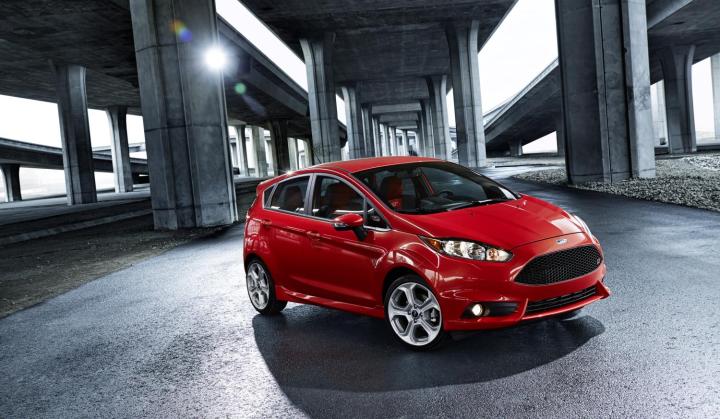
Both cars were spied testing in full camo recently in Europe, as a black mystery Fiesta joined two prototype Focus RS’s, also fairly disguised despite it being officially revealed back in February.

From a glance at the shots taken by CarPix via Carscoops, the bodywork of the Fiesta looks chunkier and wider, hinting that this is more than a mere Fiesta upgrade. We’d love to take a peek under the hood and confirm our giddy suspicions.
At the moment, the Fiesta packs a 1.6-liter turbocharged ecoboost four-cylinder with direct injection for its ST trim. The front-wheel drive hatchback gets 197 horsepower to the wheels and 202 pound-feet of torque. The numbers are just enough to make this sport-tuned rocket one heck of an autocross plaything. So what would the RS version bring?
First off, power to all four wheels would probably be a big factor in distinguishing itself from the ST. More wheel drive should also mean a boost in power as well, and we know that Fiestas that run currently in the World Rally Championship can net 300 horsepower out of the same engine. It’s doubtful that the road car would get nearly as much, but its indicative of what’s possible.
Of course, nothing has been confirmed, but this morsel of information is enough to get us salivating for what could be. The Focus RS has us already counting the days until its launch, but considering how much of a blast the Fiesta ST is, we can’t wait to see what the RS treatment could bring.


